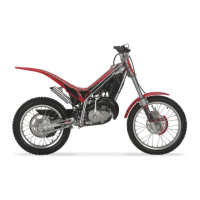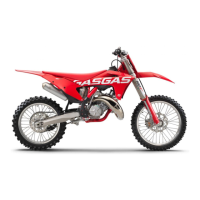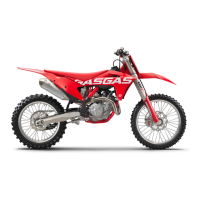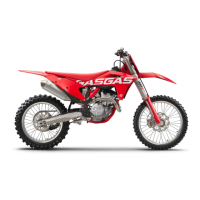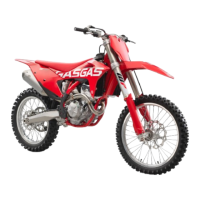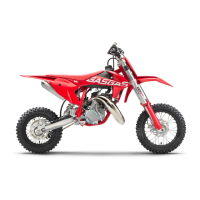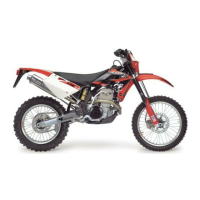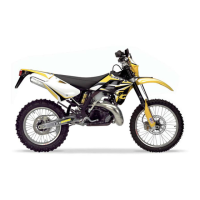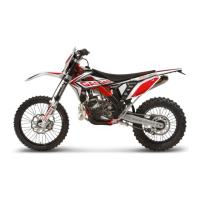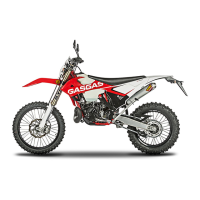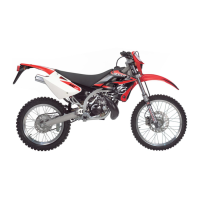How to troubleshoot blink code 12 on a GAS GAS MC-E 5?
- AAlyssa JacksonSep 8, 2025
If your GAS GAS Motorcycle is showing blink code 12, it indicates a fault in the throttle grip. Check the throttle grip for damage.
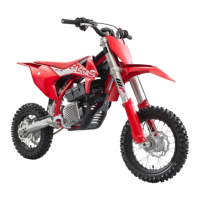
How to troubleshoot blink code 12 on a GAS GAS MC-E 5?
If your GAS GAS Motorcycle is showing blink code 12, it indicates a fault in the throttle grip. Check the throttle grip for damage.
What to do if my GAS GAS MC-E 5 displays blink code 14?
If your GAS GAS Motorcycle is showing blink code 14, it means the throttle grip was actuated during activation. Make sure not to operate the throttle grip during activation.
What does blink code 41 on my GAS GAS Motorcycle mean?
If your GAS GAS Motorcycle is showing blink code 41, it indicates the vehicle was moved during activation. Ensure that the vehicle remains stationary during activation.
Why is my GAS GAS MC-E 5 showing blink code 42?
If your GAS GAS Motorcycle is showing blink code 42, it means the motor speed is outside the permissible range. Avoid rolling backward with the vehicle.
| Battery | Lithium-ion |
|---|---|
| Voltage | 48 V |
| Type | Electric Motorcycle |
| Motor | Electric Motor |
| Frame Design | Steel Frame |
| Front Suspension | USD Fork |
| Rear Suspension | Mono Shock |
| Front Brake | Disc Brake |
| Rear Brake | Disc Brake |
| Chain | 520 |
Explains the meaning of specific symbols and typographical formats used in the manual for clarity.
Defines the vehicle's intended purpose and warns against misuse, outlining risk levels and tampering precautions.
Provides guidelines for safe operation and actions to follow after a fall or accident.
Emphasizes the necessity of protective gear and safety precautions for maintenance work.
Covers environmental considerations, manual importance, and fire hazards associated with the battery.
Explains warranty terms, the importance of regular service, and recommendations for approved parts.
Covers approved substances, customer support channels, and notes regarding figures in the manual.
Explains the vehicle's power supply system and operation at low temperatures.
Illustrates and labels key components visible from front left and rear right views.
Details locations of VIN, type label, motor, fork, shock absorber, and battery identification numbers.
Identifies hand brake, throttle grip, and handlebar magnetic switch functions for operation.
Explains On/Off button and under-seat magnetic switch for activation and ride mode locking.
Covers foot brake lever, plug-in stand, and diagnostics connector locations.
Overviews the element and explains the function of the ride mode button.
Details ride mode display, malfunction lamp, charging indicators, and the power reduction feature.
Offers crucial advice for preparing the vehicle and rider for the first use.
Lists pre-ride checks and guides on starting the vehicle.
Covers riding, braking, recuperation, and safe parking procedures.
Provides guidelines for safely transporting the motorcycle.
Details service intervals, additional information, and mandatory maintenance tasks.
Lists recommended maintenance tasks based on time or operating hours.
Covers basic chassis setting and the air suspension system.
Details adjustments for compression and rebound damping, and spring preload.
Covers sag measurement, spring preload, and fork air pressure/rebound adjustments.
Covers handlebar mounting options and adjustment procedures.
Outlines the various options available for adjusting the vehicle's seat height.
Details adjusting seat height via shock absorber, fork leg positions, and frame subframe.
Covers lifting, fork bleeding, protector maintenance, and triple clamp/steering head bearing procedures.
Details maintenance of number plates, fenders, and shock absorber.
Covers seat removal/mounting, chain service, frame checks, and grip inspection.
Covers checking and adjusting hand brake lever play and position for rider comfort.
Guides on checking brake discs, fluid levels, and linings for safety and performance.
Details adding brake fluid and changing linings for front and rear brakes.
Covers checking and adjusting foot brake lever free travel and basic position.
Covers the procedures for removing and installing the front and rear wheels.
Guides on checking tire condition, age, pressure, and spoke tension.
Identifies charger components, provides positioning guidelines, and details the charging procedure.
Explains how the vehicle's components are air-cooled by airflow.
Provides instructions for cleaning the motorcycle safely and effectively.
Outlines storage steps and procedures for preparing the vehicle after storage.
Lists common faults, their causes, and recommended actions for problem resolution.
Lists technical specifications for engine, chassis, and electrical systems.
Provides technical data for tires, fork, and shock absorber.
Specifies tightening torques for various chassis screws and nuts.
Specifies types and recommendations for essential vehicle fluids.
Lists recommended chain cleaners, greases, oils, and cleaners.
Explains SAE viscosity classes for oils.
Defines BIN as Battery Identification Number, linked to the vehicle's VIN.
Defines common abbreviations used throughout the manual.
Explains that yellow/orange symbols indicate error conditions requiring intervention.
